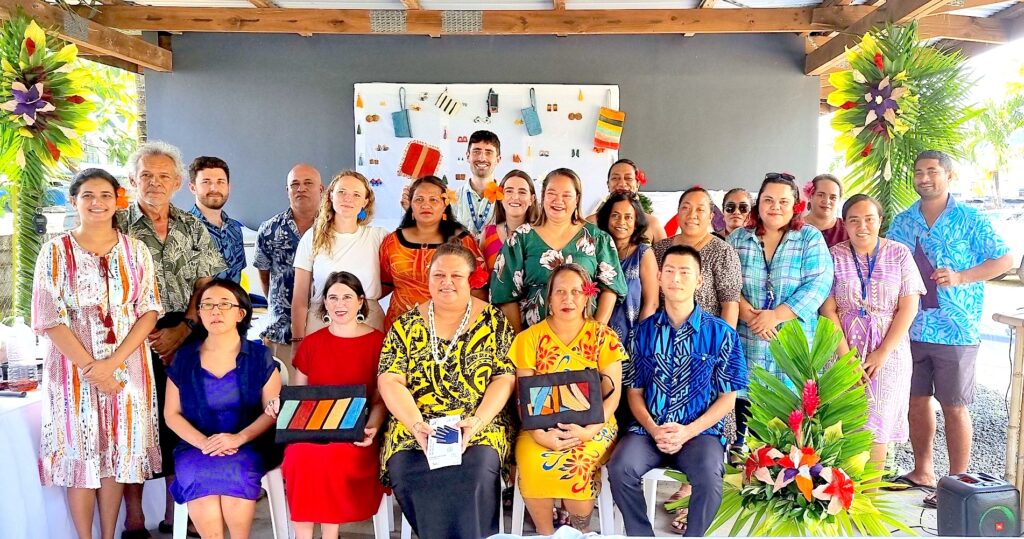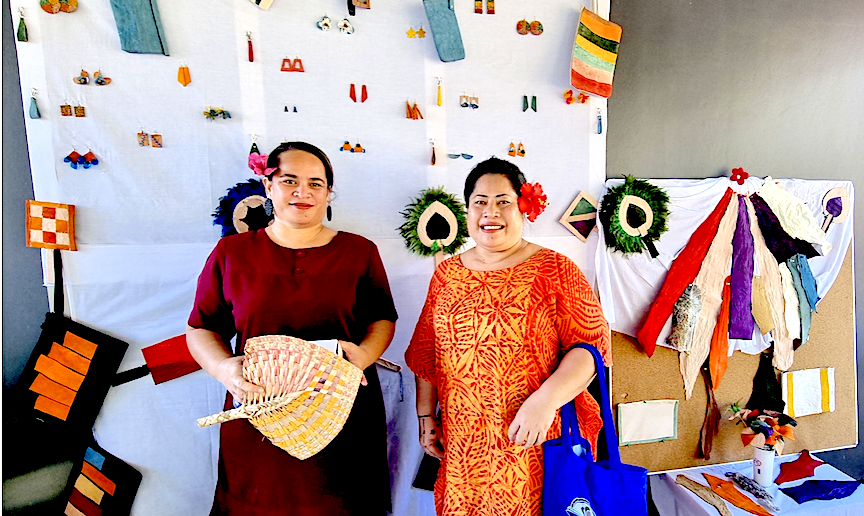
The showcase attracted a number of public and private sectors actors, community entrepreneurs & UNDP personnel.
By Staff Writer
Turning fish skin into leather and leather products following trial runs is stirring up local interests as a source of family income, following the success of trial runs.
A display of products was held today, Friday 22 March 2024” at what a location referred to as the ‘Fish Hub’ at Taurus.
The findings so far include the potential for widespread adoption in households or community, enhancing Samoa’s handicraft sector and opening new export markets.
Challenges still remain as in further consideration of processing agent availability and fish waste seasonality.
The UN Development Programme (UNDP) through its Accelerator lab (AccLab) development arm was behind the special project, namely the ‘100% Fish Use’
AccLab partnered with Think Sea Corp (Tototo), a Japanese company specializing in fish leather production, to carry out joint experiments into transforming locally available fish skin into high-quality leather.
Two master trainers, Ane Lesa and Viena Siaosi, from the Samoa National Youth Council, were trained in the low-cost leather production process, empowering them to promote entrepreneurship within their communities.
“Experimenting on the fish leather process yielded many lessons and insights,” said Verena Linneweber, UNDP Deputy Resident Representative.

“As a low-cost, low-tech solution, we proved that it clearly can be adopted at household or community level,” she added.
“The novelty of fish leather adds a new dimension to the made-in-Samoa handicrafts market.
“Fish leather is popular overseas and could be a potential new export commodity here,”.
Local entrepreneur, Agnes Fruean of ‘This n That’ and owner of the Tavai brand, has already trialed this process, with much success.
She has added fish leather to her range of bags.
“This is definitely a viable venture for local entrepreneurs,” Ms. Fruean found out.
“You just need a bit of capital at the beginning, but once you get going, there is definitely a lot of potential.
“This is a premium product for the global market. Locally, this will start off as a niche market, but it will certainly grow.
“Probably 99.8% of the required materials can be sourced in country. It’s a lengthy process, but it’s not difficult at all.
“This will be ideal for youth entrepreneurs or women in the villages as another source of income for their families.”
The bigger picture behind the trial effort is for island countries like Samoa to tap into vast oceanic resources to make fish a vital source of food and economic security.
Threats such as climate change, pollution, and overfishing to endanger ocean ecosystems and livelihoods will be looked at.
The UNDP plans to share the success of the fish leather making process with interested parties, inviting collaboration to refine and expand this promising opportunity.